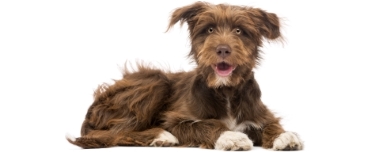How To Check Your Dog's Teeth

 Video found at youtu.be/ETeFcUjmwF8
Video found at youtu.be/ETeFcUjmwF8
The best way to get your dog comfortable with having their teeth checked is through reward-based training – which simply means making it a positive experience that they associate with rewards.
You’ll need to train them over a few short sessions, at their own pace, using high-value (yummy) treats. Start as young as possible, but don’t worry, it’s never too old to teach an old dog a new trick!
- Begin by touching your dog’s lips (on the outside) and rewarding them with a treat.
- Once they are totally comfortable with this step, start lifting their lips, and rewarding them afterwards.
- Once they are happy with their lips being lifted, start gently touching their teeth and gums, not forgetting to reward them afterwards.
- If they appear worried at any point, stop, give them a break, and at the next session, take it a bit slower. Only ever progress to the next step once they are completely comfortable.
- Once your dog is happy with these steps, you can fully examine their mouth – but don’t forget to keep rewarding them throughout.
Step 1 – Check their gums
- Gums should be salmon pink in colour
- There shouldn’t be any:
- Redness
- Ulcers
- Bleeding
- Lumps
- Visible tooth roots
- Check all the way to the back, and don’t worry if you come across any healthy-looking black or grey patches – this will be their natural pigment (gum colour).
Step 2 – Check their teeth
- Gently touch each tooth to make sure it’s not wobbly, cracked, or painful.
- Make sure none are missing, and if they’re an adult, make sure they don’t have any baby teeth left.
- Keep an eye out for tartar, which is a hard brown substance that can build up and cause problems.
Step 3 – Check their breath
- Finally, give your dog’s breath a sniff. It obviously won’t be minty fresh, but it shouldn’t be too stinky!
If you notice any signs of a problem with their teeth, gums or breath, book an appointment with your vet.
How often should I check my dog’s teeth?
Ideally, you should check your dog’s teeth every day when you brush them. If this isn’t possible, try to look at them at least every week or two. Check out our video on brushing your dog’s teeth.
Published: August 2022
Did you find this page useful?
Tell us more
Please note, our vets and nurses are unable to respond to questions via this form. If you are concerned about your pet’s health, please contact your vet directly.
Thank you for your feedback
Want to hear more about PDSA and get pet care tips from our vet experts?
Sign up to our e-newsletter
Written by vets and vet nurses. This advice is for UK pets only. Illustrations by Samantha Elmhurst.
